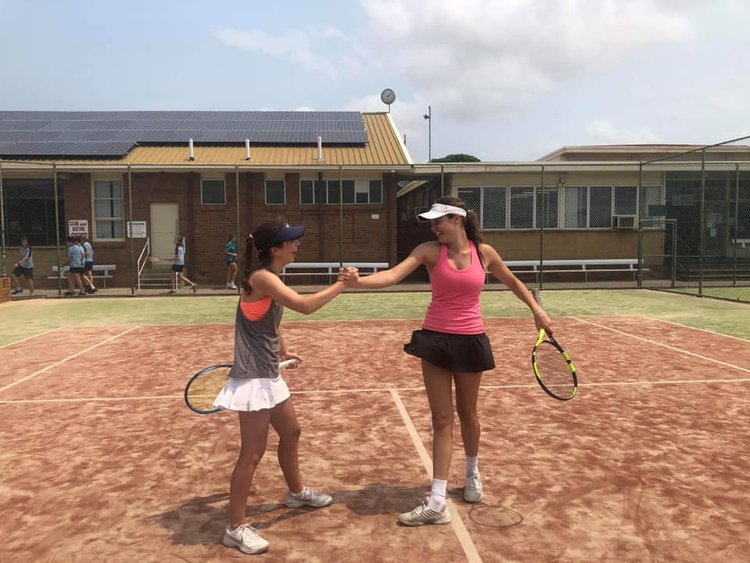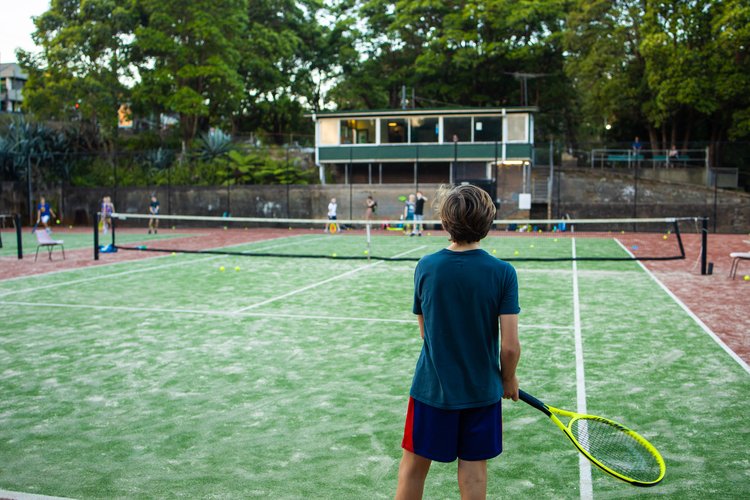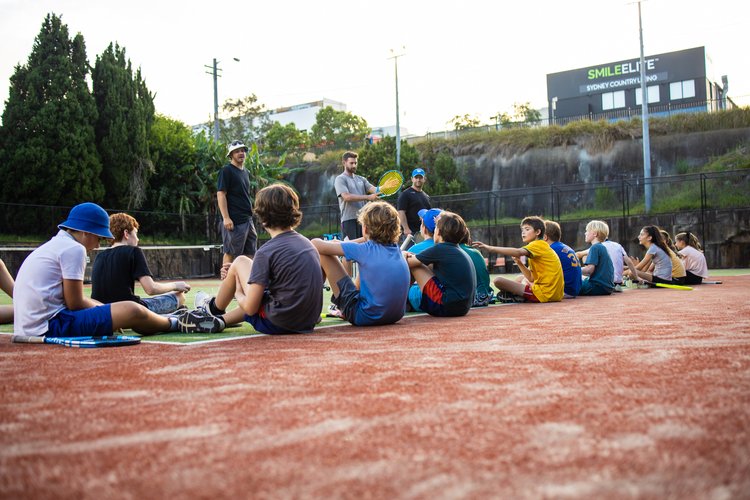Tennis, a sport revered for its blend of skill, agility, and endurance, also brings with it the risk of injuries. Whether you’re a weekend warrior on the court or a seasoned professional, understanding and preventing tennis injuries is crucial for enjoying the game safely and sustainably. In this article, we’ll explore common tennis injuries – their causes, symptoms, and, most importantly, strategies for prevention. By increasing awareness and adopting the proper precautions, players can greatly reduce their risk of injury and ensure their time on the court is both safe and enjoyable.
Tennis Elbow: Causes, Symptoms, and Prevention
Tennis elbow is a typical injury that can be a real nuisance for players. Despite its name, you don’t have to be a tennis player to experience it. This section will break down what causes tennis elbow, how to spot it, and most importantly, tips on tennis elbow prevention.
What Causes Tennis Elbow?
Think of the tennis elbow as an overuse injury. It usually happens when you repeat the same arm movements too often, which can occur in tennis with all the swinging. Overuse can cause the tendons connecting your forearm muscles to the outside of your elbow to tear, causing discomfort and soreness.
Spotting the Symptoms
Tenderness or soreness on the outside of the elbow is the main sign of tennis elbow. This discomfort might also travel down your forearm. You might notice it most when you lift things, make a fist, or even just open a door or shake hands. Paying attention to these signs is important because catching them early can help prevent more serious problems.
Prevention Tips
Preventing tennis elbow involves a mix of techniques and habits. Here are a few essential tips:
- Proper Technique: Make sure your tennis strokes are spot on. Incorrect technique can add extra strain on your elbow. Consider getting some coaching if you’re unsure.
- Strength and Flexibility: Strengthening and stretching the muscles in your arm can help take the load off your elbow. Simple exercises can make a big difference.
- Rest and Recovery: Take a break if you start feeling pain. Resting your arm is crucial in preventing tennis elbow from getting worse.
- Equipment Check: Using the right size of a tennis racquet and the correct string tension can also help. Equipment that’s too heavy or strung too tightly can increase the risk of tennis elbow.
By understanding these critical points about tennis elbow prevention, players can reduce their risk and continue enjoying the game they love. Remember, caring for your arms is just as important as perfecting your serve!
Ankle Sprains: Maneuvering the Court Safely
Ankle sprains are common in tennis, involving quick turns and sudden stops. Let’s explore what an ankle sprain is, how it happens, and, most importantly, how to prevent it. Understanding ankle sprains in tennis is essential for staying safe on the court.
What is an Ankle Sprain?
An ankle sprain happens when the ligaments in your ankle stretch or tear. Ligaments are like strong rubber bands that hold your bones together. In tennis, when you flick or land awkwardly after a jump, these ligaments can get over-stretched or torn, resulting in a sprain. It can be painful and can make your ankle swell.
How Does It Happen?
Picture yourself sprinting to reach a ball and then quickly turning to hit it. Such swift movements can twist your ankle, especially if you’re not positioned correctly. Wearing improper footwear or playing on uneven surfaces can also increase your risk of an ankle sprain.
Preventing Ankle Sprains
Here are some tips to help you avoid ankle sprains on the court:
- Proper Footwear: Wear tennis shoes that provide good ankle support and fit well. This helps stabilise your feet and reduces the chance of twisting your ankle.
- Strength and Balance Exercises: Strengthening the muscles around your ankle and improving your balance can help protect your ankles. Basic exercises such as standing on one foot can be effective.
- Warm-Up and Stretch: Always warm up before playing. This prepares your muscles and joints for the activity. Stretching, especially your ankles and legs, is also crucial.
- Mind the Surface: Be extra careful when playing on uneven or slippery surfaces. These can increase the likelihood of ankle injuries.
Following these tips and being mindful of your movements can significantly reduce the risk of ankle sprains in tennis. Remember, caring for your ankles is vital to staying safe and enjoying your game.
Rotator Cuff Injuries: Protecting the Shoulder
When playing tennis, your shoulders do a lot of work, especially when serving or hitting overhead shots. This can sometimes lead to rotator cuff injuries. Let’s understand these injuries and how protecting the rotator cuff is crucial for tennis players.
What is a Rotator Cuff Injury?
The rotator cuff is a set of muscles and tendons around the shoulder joint. They keep your arm in the shoulder socket and help you lift and rotate your arm. It’s called a rotator cuff injury when these muscles or tendons get injured. This can happen from overuse, like repeatedly hitting tennis balls or a sudden injury during play.
How Do Rotator Cuff Injuries Occur?
Imagine your shoulder as a busy hinge on a door. If the hinge gets used too much or in the wrong way, it can start to wear out. The same goes for your shoulder when playing tennis. Constantly swinging your racquet, especially with incorrect technique, can strain the rotator cuff. Also, not giving enough rest and recovery time to your shoulder can lead to these injuries.
Tips for Protecting the Rotator Cuff
Here are some helpful tips to protect your rotator cuff:
- Proper Technique: Know and practice the correct techniques for serving and hitting. This can help reduce the strain on your shoulder.
- Strengthening Exercises: Specific exercises can strengthen the muscles around your shoulder, making them more injury-resistant.
- Regular Stretching: Stretching helps keep the muscles flexible and can prevent injuries. Make sure to include shoulder stretches in your routine.
- Adequate Rest: Rest is crucial. If your shoulder starts to feel sore or tired, give it a break to recover.
Understanding and applying these tips for protecting the rotator cuff can reduce the chance of shoulder injuries. This way, you can enjoy playing tennis while keeping your shoulders strong and healthy.
Stress Fractures and Overuse Injuries
In tennis, just like in many sports, playing a lot and working hard is great, but sometimes it can lead to certain types of injuries, especially if you don’t rest enough. These are called overuse injuries in tennis, and they include stress fractures. Let’s explore these injuries and how they can affect tennis players.
What are Stress Fractures and Overuse Injuries?
Imagine your bones and muscles as a piece of elastic. If you stretch it a little bit every day, it stays strong. But if you stretch it too much all the time, it can start to wear out or even snap. This is similar to what happens in overuse injuries. When you use the same muscles and bones too much, like when playing lots of tennis without enough rest, they can get tiny cracks called stress fractures or other types of injuries like tendonitis.
How Do They Occur?
Stress fractures and overuse injuries in tennis players often happen in the legs and feet. This is because of all the running, stopping, and starting quickly that tennis involves. If your body doesn’t get the chance to rest and repair itself, these high-stress actions can lead to injuries.
Preventing Overuse Injuries
Here are some guidance to help avoid overuse injuries and stress fractures:
- Balanced Training: Mix up your practice with different types of exercises. This can help prevent putting too much strain on one part of your body.
- Rest and Recovery: Your body needs time to rest and heal, especially after intense training or playing. Make sure to get enough rest.
- Proper Footwear: Wearing the appropriate shoes is vital. They must provide good support and cushioning to absorb the shock and stress on your legs and feet.
- Gradual Intensity Increase: If you’re increasing your training, do it slowly and steadily. This gives your body time to adapt to the new levels of activity.
Understanding and preventing overuse injuries in tennis, including stress fractures, is key for any player who wants to enjoy the sport for a long time. You can keep playing strong and healthy by training smart, resting well, and looking after your body.
Knee Injuries: Understanding the Meniscus and Ligaments
Knee injuries are common in tennis and often involve two main parts: the meniscus and the ligaments.
The Meniscus and Ligaments in Your Knee
Think of your knee as a complex machine with different parts to make it move and bend smoothly. The meniscus is like a cushion inside your knee. It’s a piece of cartilage that absorbs shock and helps your knee bear weight. The ligaments are like strong ropes that hold the bones of your knee together. There are several ligaments in your knee, but the most commonly injured ones in tennis are the ACL (anterior cruciate ligament) and the MCL (medial collateral ligament).
How Do Meniscus Tears and Ligament Injuries Happen in Tennis?
Meniscus tears and tennis injuries usually happen because of the quick, twisting motions that are part of the game. When you suddenly change direction, stop, or jump, you can put a lot of stress on your knee. If the stress is too much, it can cause tears in the meniscus or ligaments. These injuries can induce pain, swelling, and difficulty moving your knee correctly.
Preventing Knee Injuries
To help prevent these types of knee injuries, here are some valuable tips:
- Proper Technique: Playing with the correct technique is essential. This lessens the chance of overstressing your knees.
- Strength Training: Strengthening the muscles around your knee can help support and protect your meniscus and ligaments.
- Warm-Up and Stretch: Always warm up before playing and do knee-specific stretches. This prepares your knees for the movements in tennis.
- Wear Supportive Shoes: Good tennis shoes can help absorb shock and give stability, reducing the risk of knee injuries.
By understanding how meniscus tears and tennis ligament injuries happen and following these prevention tips, you can keep your knees safer while enjoying your game on the court.
Tips for Proper Warm-up and Cool-down Routines
Before you start playing tennis, it’s important to prepare your body. This is where warm-up and cool-down routines come in. They’re like bookends to your game or practice session – the warm-up gets your body ready to play, and the cool-down helps it to relax afterwards. Let’s look at some effective tennis warm-up techniques and cool-down tips to keep you playing your best and reduce the risk of injury.
Warm-Up: Getting Your Body Ready
A good warm-up routine gets your muscles loose and your heart rate up. This means your body will be ready for all the running and hitting in tennis.
- Start with Light Cardio: Begin with 5-10 minutes of light jogging or skipping. This increases your heart rate and warms up your muscles.
- Dynamic Stretching: Instead of staying still, do stretches that involve movement, like leg swings and arm circles. This allows you to ready your muscles and joints for the actions in tennis.
- Practice Tennis Movements: Spend a few minutes practising specific tennis movements. Shadow swings with your racquet for forehands, backhands, and serves are great tennis warm-up techniques.
Cool-Down: Helping Your Body Recover
After playing tennis, a cool-down helps your body slowly relax and recover. This is important to reduce stiffness and soreness later.
- Gentle Cardio: Slow down with a gentle jog or walk for about 5 minutes. This helps to lower your heart rate gradually.
- Stretching: Now do static stretching, holding a stretch for about 30 seconds. Focus on areas like your legs, arms, and back, which you often use in tennis.
- Rehydrate and Refuel: Drink plenty of water and have a healthy snack. This helps your body to rehydrate and repair itself.
Staying Fit and Safe on the Tennis Court
We’ve explored a lot about staying safe while playing tennis. From understanding common injuries like tennis elbow and ankle sprains to learning about meniscus tears and tennis injuries, it’s clear that taking care of your body is key. Keep in mind that warming up and cooling down are just as significant as the game itself. They prepare your body for the action and help it recover afterwards.
Your Tennis Journey with Discover Sports Group
Now that you know how to keep yourself safe and injury-free, are you ready to hit the court? Discover Sports Group is here to help you on your tennis journey. Whether you’re just starting out or looking to improve your game, our tennis programs offer something for everyone. With expert coaching and a supportive environment, we’re dedicated to supporting you in achieving your tennis goals while staying healthy and safe.
Interested in joining our tennis programs? Get in touch with Discover Sports Group today! We’re excited to welcome you to our community and help you make the most of your tennis experience.









